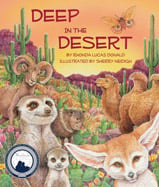Alignment to Standards for MO

| Grade | Number | Standard |
|---|---|---|
| 1 | SC-EC 1A4a. | specific organism may interact with other organisms or with the environment (e.g., pollination, shelter, seed dispersal, camouflage, migration, hibernation, defensive mechanism |
| 1 | SC-EC 1A4b. | Recognize different environments (i.e., pond forest, prairie) support the life of different types of plants and animals |
| 1 | SC-LO 1D1a. | Identify and compare the physical structures of a variety of plants (e.g., stem, leaves, flowers, seeds, roots |
| 1 | SC-LO 1D1b. | physical structures of a variety of animals (e.g., sensory organs, beaks, appendages, body covering) |
| 1 | SC-LO 1D1c. | Identify the relationships between the physical structures of plants and the function of those structures (e.g., absorption of water, absorption of light energy, support, reproduction) |
| 1 | SC-LO 1D1d. | Identify the relationships between the physical structures of animals and the function of those structures (e.g., taking in water, support, movement, obtaining food, reproduction |
| 1 | SC-LO 1D3a. | Identify the major organs (roots, stems, flowers, leaves) and their functions in vascular plants (e.g., absorption, transport, reproduction) |
| 1 | SC-LO 1D5a. | Compare structures (e.g., wings vs. fins vs. legs; gills vs. lungs; feathers vs. hair vs. scales) that serve similar functions for animals belonging to different vertebrate classes |
| 1 | SC-LO 1DKa. | Observe and compare the structures and behaviors of different kinds of plants and animals |
| 1 | SC-LO 1E1a. | Distinguish between plants and animals based on observable structures and behaviors |
| 2 | SC-EC 2A4a. | Classify populations of organisms as producers, consumers, or decomposers by the role they serve in the ecosystem |
| 2 | SC-EC 2A4b. | Differentiate between the three types of consumers (herbivore, carnivore, omnivore) |
| 2 | SC-EC 2A4c. | Categorize organisms as predator or prey in a given ecosystem |
| 2 | SC-ES 2A4b. | Identify the major landforms/bodies of water on Earth (i.e., mountains, plains, river valleys, coastlines, canyons |
| 3 | SC-EC 3C4a. | Identify specialized structures and describe how they help plants survive in their environment (e.g., root, cactus needles, thorns, winged seed, waxy leaves) |
| 3 | SC-EC 3C4b. | Identify specialized structures and senses and describe how they help animals survive in their environment (e.g., antennae, body covering, teeth, beaks, whiskers, appendages |
| 3 | SC-EC 3C4c. | internal cues (e.g., hunger) and external cues (e.g., changes in the environment) that cause organisms to behave in certain ways (e.g., hunting, migration, hibernation |
| 3 | SC-EC 3C4d. | Predict which plant or animal will be able to survive in a specific environment based on its special structures or behaviors. |